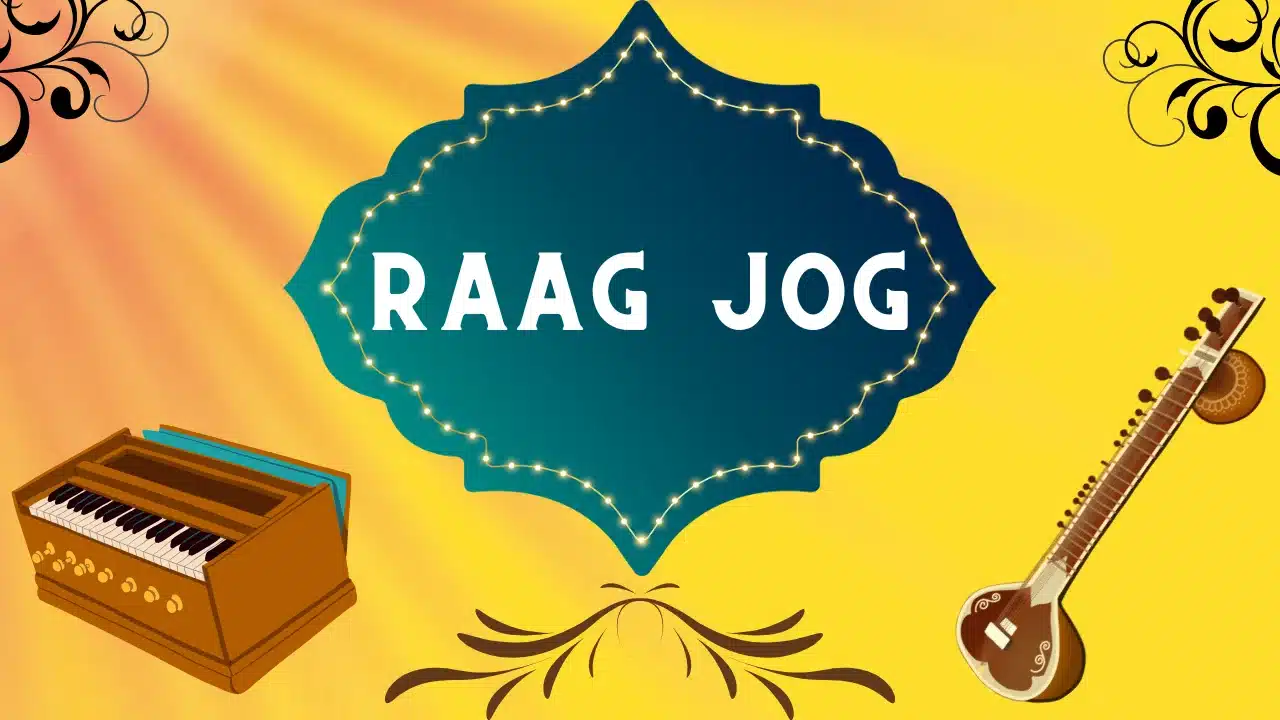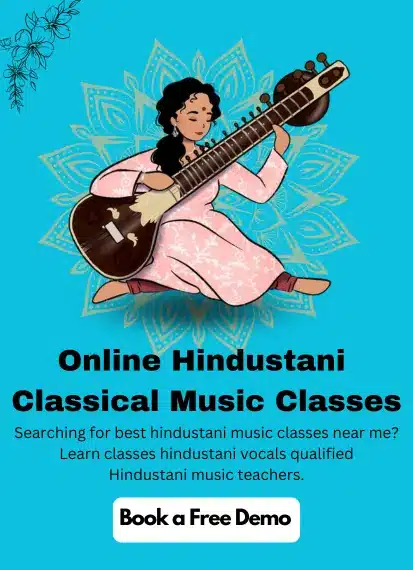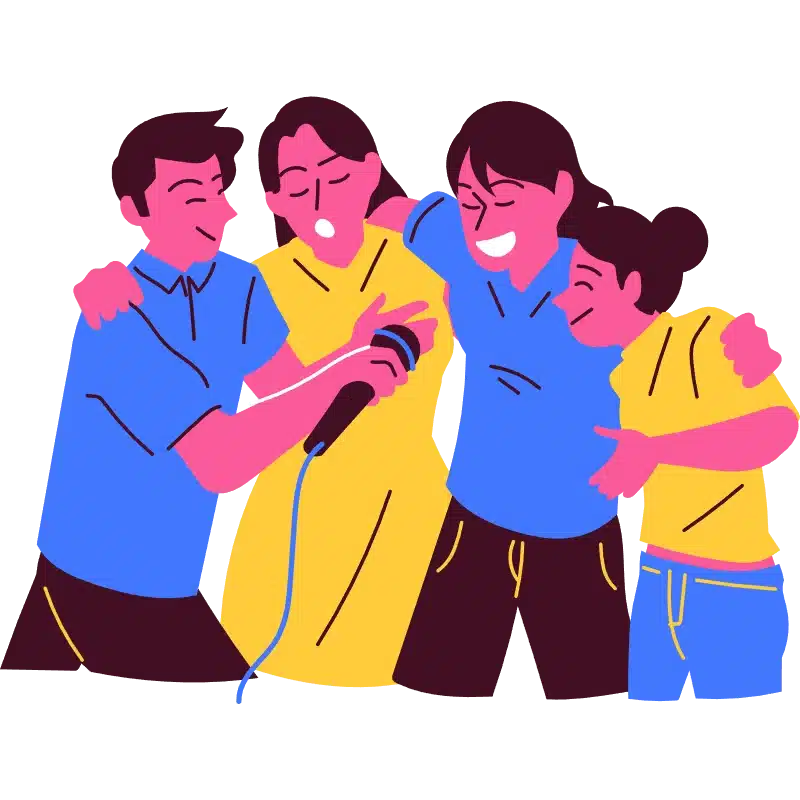History of Raag Jog
Although the raag Jog’s history is unknown, the following information covers it’s history as much as possible. Raag Jog is allegedly a part of Kafi Thaat in hindustani classical music. While the Kham-derived Raag Tilan (Bor: “Tilang originated from Telangana, and may it is brought to North by an unknown serves as its foundation, the raag’s melodic roots go poet of 15th/16th century back considerably further. Jog is a very young addition, despite its universal popularity and influence in the present raagsphere. As per the scholars believe the raag gained popularity in the years after World War II, yet some associate its zigzagging melodies with Emperor Akbar’s court in the 16th century (Deepak Raja claims that “Jog did not deserve thorough treatment in crucial early 20th-century publications of hindustani classical music).
Raah Jog and Raag Nattai are comparable in Carnatic music. In Naattai, numerous keerthanas have been composed. Many songs, such as “Pramadavanam” by His Highness Abdulla, are set to Raag Jog in Malayalam films. It has only been in the last several decades that the Hindustani Raag Jog has gained popularity. Some say that Mehbub Khan of Atrauli (Daras Piya) is the one who created Raag jog compositions although there is no conclusive evidence. Raag Jog being one of the simple Raag to learn, its propensity is more simply formed by its own scale path. It can also allude to the Kauns-ang by using the word ma and words like Sa more strongly than it does Tilang and Dhani. It can also evoke hints of various other raag, such as Raag Khamaj (GmP; PmG), Raag Kalavati (nSG; PnS), and the Carnatic Nattai.
Also, it’s unclear how the name was changed to the new form. “Jog” means “state of union” in Sanskrit, and it comes from the same root as yoga. Based on my conjecture, this could allude to the practice’s essential emphasis on the “union” of the Ga, that is Sudha and Komal Ga Swaras which is central to its Raag Jog notation. In any case, the raag can captivate a wide range of listeners. Also it is found that Jog has a special attraction for Westerners. Raag Jog will be nonstop populous as it has a tagline that will never get outdated. This mostly fit to sing in the late night concerts (It is the 7th most performed Raag in twenty-first century as per Deepak Raja’s raag scape research)
By attracting the listeners from around the world, Jog Raag combines a timeless tag line with a plain melodic guidelines, and suits to perform in the dusk time concerts (‘research of Deepak Raja ranks it as the 7th most-performed raag of the 21st century). In future Jog raag can change into a special Raag as it is a most important part of Tilang’s parent land. This may not familiar with music, probably because of its upbeat, energetic style and distinctively bluesy blending of major and minor tones over a B7 background.
Musical Characteristics of Raag Jog
Divergent opinions exist on the raag’s characteristics. There are several variations of Raag Jog compositions. For instance, the Ga and Ga) and Komal Ni (Ni) are both used in the most often used alternation. The structure of Raag Jog compositions omits the second and sixth intervals, Re and Da, it is a pentatonic raag. This unique combination is often a highlight in Raag Jog performance. It uses Komal Ga for descent and Shuddha Ga for ascent. The Raag Bihag also uses Sudha Ni in its other form. This Raag in Ustad Amir Khan’s type, attention has been given to Madhyam (Ma), which creates a sad mood with a lot of intensity. Using both Ga is now become a voguish, even if this is unacceptable in Hindustani classical music.
Raag Jog is a popular improvisational tool for ethnic music, producing both upbeat and depressing sounds. It is deemed appropriate for the evening, specifically from 9:00 PM to 12:00 AM. Though the raag is relatively new, its popularity in light-classical forms like bhajan, thumri, and ghazal hasn’t stopped it from spreading. Raag Jog has gone through rapid lyrical growth in a short period of time like other growing popular Raag. Double Ga and Ni slowly vanished by the turn of the 20th century from most of the traditions. In the 1950s the habit of pausing on Ni and Ma started by a fascinating simplification of Amir khan, which in later generation Sudha Ni lost its popularity.
Even though there is conflicting evidence linking the composition’s original composer, Agra origin Haji Sujan Khan, a court musician from Tansen’s time, to the work, his compositions—especially the timeless duo undoubtedly influenced Jog’s subsequent trajectory.
As previously indicated, Jog’s melodic movements center on its Ga-mixing catchphrase, which uses stern ornaments like (m)Gm(S)g\S to adorn a fundamental GmgS rhythm. This kernel, which is unquestionably the core of the raag, is brought to life in the last sections and is usually introduced with forceful motions from above (e.g. PnS; nPmG; Gm(S)gS). In most places Pa -Sa is considered as Vadi and Sambadi. Mandra Ṇ and Sudha G is the most important notes in starting place.
Raag’s basic Sa-Ga-Pa major triad. This change has also affected the menu of nyas. However, some artists have recently rendered Ga (also known as “zigzag” or Gmg) in an adjacent manner, usually with a slow meend (e.g, G(g)S, which is common in Imdadkhani), while the majority still treat it in a vakra manner performers are allowed to move freely between the three saptak, bringing enchantment with a variety of elaborate ornamentation. The tala cycles that go with the Raag jog performances are typically given in madhya to drut laya.
While Raja proposes a chalan of SngS; nPmG; GmP; GmPnS; P(S)nS; nSgS; gSnPm; mPGm; Gm(S)gS, Tanarang provides examples of combinations of these terms.
That- Kafi
Wadi- P
Sambadi- S
Time- Late evening raag (12am -3 am )
Nature- Calm
Pakar- G M P N P, P N P M G M, G M Ģ S
Nyas- S G P
Jati- Audhav Audhav
Aaroh- S G M P N Ṡ
Abroha – S Ṉ P M G S
Aalap- S G M P GMGS GMP NNPMP GMP GMGS SNPṆS SGMP GMP GMGS
Bandish-1 (Based on Teen Tall-Madhyam Laye)
Stahi
Sajan more ghar aaye
Mana ati sukha paye
Managal gaoo chawk purao
Prem piya hum paye
Aalap
Sajan more ghar aaye
N- – – | S- – – | G- M- | G – S – |
Sajan more ghar aaye
S- G – | M- P – | P-M – P | G M P _ |
Sajan more ghar aaye
G- M – | P – – – | N N P M P | – – – – |
Sajan more ghar aaye
S – – – | N – P | G M P – | G M G S
Taan
Sajan more gharr
NS GM PM GM | PM GM GS NS
Sajan more ghar
GM PM Pm GM | PM GM GS GS |
Sajan more ghar
PN PM PM GM | GM PM GM GS |
Sajan more ghar
NS GM SG MP | GM PN MP NS
Sajan more ghar aaye
PP MP GM GP | NN PM PP MP
GM PM GM GS | NS GM SG MP
Sajan more ghar aaye
SN PM NP MG | GM PM GM PM
GM GS GS NS | GM NS GM NS
Sajan more ghar aaye
S – N – P – M – |GM PM GM G – |
GM PM GM G – |GM PM GM G – |
Tihai
(Sajan more ghar) 3 times
Aoge – – – –
Composition to Practice in Raag Jog
- Dil Se Re (Film -Dil Se)
- Har Aan Sitam Dhaye He (Film – Non film song)
- Naina Dwara Se (Film – Sawan)
- Unape Yu Pyar Aane Laga Hai (a.k.a. Un Pe Kuch Iss Tarah Pyar Aane Laga) (Film – Non-film song from album “Sehar Ho Rahi Hai”)
- Ye Moajiza Bhi Mohobbat (Film – Non film song)
FAQs
What is the classification or “Thaat” of Raag JOG?
Jog is allegedly a part of Kafi Thaat.
What is the mood or “rasa” evoked by Raag JOG?
Raag JOG has the mood of contemplative serenity,devotional fervor and spiritual yearning.
What is the meaning or origin of the name Raag JOG?
Although it's not clear how the name was transferred to the modified form. "Jog" means "state of union" in Sanskrit, and it comes from the same root as yoga
Related Blog: Raag Asavari































